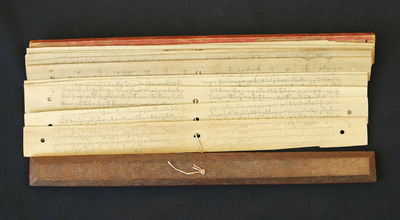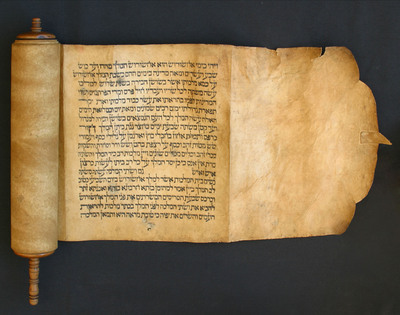India is traditionally considered the birthplace of bookbinding. In the 2nd century BCE, Hindi scribes began etching religious texts into palm leaves and binding them together with twine between two boards to form a rudimentary book-like structure. This practice protected the palm leaves from direct exposure to sunlight, rapid fluctuations in water content, and incidental damage, and proved to be an efficient method for organizing multi-page texts. Buddhist monks quickly realized the value of the process and, upon adopting it, became instrumental in introducing it to the Middle East and Eastern Asia.
While much of the Western world used scrolls during Antiquity, they were not always an efficient means of storing and accessing information. Wax tablets eventually became common in the Mediterranean as they were recyclable and allowed users to access specific blocks of text quickly. For longer works, tablets were sometimes hinged together, forming a device not unlike the modern book, though with many fewer leaves. Nevertheless, the scroll was used for record-keeping centuries after more practical methods had become known.
The technique of binding folded parchment between wood boards became popular among Romans during the first and second centuries CE. These notebooks, used for personal writing, were known as pugillares membranei and are considered to be some of the first examples of true codices, or books. Similar items have also been found in Egypt, predating even those found in Western Europe. The basic codex form was introduced to other parts of Western Europe and the Middle East, and quickly became preferred over other forms such as the scroll and tablet because of accessibility and space efficiency.1
Notes
- Roberts, Colin & Skeat, T.C. The Birth of the Codex (London, England: British Academy, 1983). Return to text ↑

A re-bound Balinese bamboo book. Originally, this text would have opened and closed much like a Venetian blind. More images here.

The Scroll of Esther. Manuscript on stitched animal skin. ca. 1750. More images here.
